This excerpt has been adapted from 1918 Pandemic: Reconstructing How the Flu Raged Then Flattened in Gloucester, Massachusetts when 183 Died in 6 weeks, HERE by Catherine Ryan. Mini posts like this one highlight select weeks during the outbreak as serialized quick reads about this Gloucester history.

Gallery on the Moors Gloucester, Mass. (photographer Frank L. Cox, 1921)
LABOR DAY WEEKEND 1918 GLOUCESTER, MASS.
World War I guaranteed that the end of summer of 1918 wasn’t carefree and innocent. Still, the traditional Labor Day weekend in Gloucester, Massachusetts, was a big one with residents and visitors traveling to-and-fro thanks to its long established destination reputation. Families hosted guests from in state and out of state. Pleasure boats and fishing boats set out and returned. Art fans were encouraged to Rocky Neck studios and the Gallery on the Moors before their summer season exhibitions closed.
Despite a one-day traffic study banning cars that Sunday, to compel gas rationing, Stage Fort Park was packed:
“A large crowd participated in the picnic at Stage Fort Park yesterday, under the auspices of the Wainola Temperance Society and Waino Band. Two fine concerts were given by the band under the direction of Charles A. Glover. There were several tents for the sale of ice cream, tonic and lunches. Two baseball games attracted a large throng in the morning and afternoon…”40
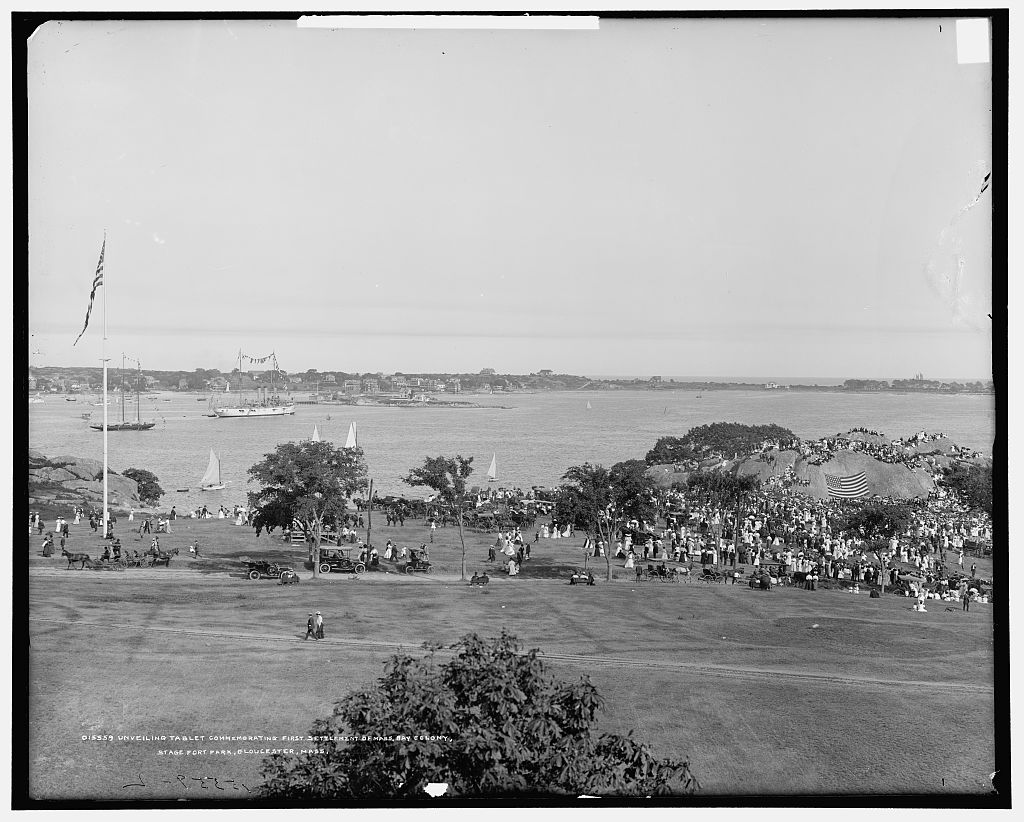
Gloucester, Mass. 1907 – View across Stage Fort Park, past Tablet Rock unveiling to Gloucester Harbor
On the pages of the Gloucester Daily Times and Cape Ann Advertiser and the Manchester Cricket, two local newspapers established in 1888, cultural events, casualty lists, and letters from enlisted men were published –unavoidably and disconcertingly –on the same page at times. Public notices and benefits in support of the war were broadcast over the long weekend, like this striking appeal for fruit stones for gas masks:
Every peach stone counts: Patriotic barrel at board of trade will receive your contribution
“The Board of trade peach stone campaign is meeting with wonderful success and the patriotic sugar barrel which has been placed in front of the rooms of Main street is rapidly being filled with the precious stones. Not only save the peach stones, but plum stones, olive pits, nutshells of all kinds except peanuts because they all make the best charcoal for making the gas masks our soldiers in France wear…One hundred peach stones makes enough charcoal for one mask and peaches are right in the height of their season. Get busy now and bring them…”41
The Gloucester Daily Times (GDT) regularly published submissions from the community on one or two inside pages, too. The individual joys & sorrows, boasts, and whereabouts were sorted by town and neighborhood with subheadings Rockport, Pigeon Cove, and Manchester; and in Gloucester, West Gloucester, Riverdale, Annisquam, Lanesville, Magnolia, and East Gloucester. The columns are chatty and informal, a bit Facebook meets Page Six depending upon the neighborhood. Downtown, or specifically the Fort and Portuguese Hill, did not have a section.
Because the general public was not informed about the severity of flu deaths in the military that spring and summer, and even the experts missed possible tell tale signs, the busy destination season continued into September, as did the dreadful war.
The comings and goings over Labor Day were detailed within a September 3rd East Gloucester column. Residents hosting summer guests, including young men on furlough, were quite possibly literal harbingers of doom or vectors. Visitors on Mt. Pleasant returned to Worcester and Watertown, and back to Somerville from Chapel Street.
“…Joseph Ehler of the U.S. navy transport service is spending a brief furlough with his parents, Mr. and Mrs. James Ehler of Mt. Pleasant Avenue. Walter Peterson of Camp Devens, Ayer, spent the holiday weekend on 8 Davis Street with his mother, Nina. Mrs. Charles E. Locke and family returned to Worcester from Mt. Pleasant. Miss Suzanne Parsons of Mt. Pleasant back from a visit in the South to resume duties at Watertown High School…Mr. and Mrs. Fred Benson and little daughter Elizabeth of Somerville were the weekend and holiday guests of Mrs. Benson’s parents, Lewis Rowe on Chapel Street.” 42
The East Gloucester column published on September 4th reveals a few more threads of what’s to come. East Gloucester would be hit particularly bad.
“…Walter Fenn, the artist, is improving gradually from his illness and at present he is at Rocky Neck.” (At the Chapel Street church school) “a full attendance is requested as business of importance is to come up for consideration and plans for the year made…There remains one more day to view the exhibition of paintings and sculpture at the Gallery-on-the-Moors…Members of the Chapel Street Baptist Sunday School will gather (for the end) of the summer season…” 43
The first day of school commenced Wednesday, September 4, 1918. Headlines from the paper pronounced a hopeful beginning,
“Teachers and Pupils Enter on Work of the Year with Vigor”. That evening, the city hosted a huge public event, “Community Sing at City Hall”.
Community Sing Filled City Hall: Voices Raised High in Patriotic Song
The Community Sing at City hall…combined with the addresses by Dr. M. M. Graham, district service manager of the United States Shipping Board and Corporal Fran A.H. Street, a returned soldier who was twice wounded and later gassed while serving with the Canadian forces, attracted an audience which filled City Hall. Patriotic music was sung, opening with the “Star Spangled Banner,” following which a proclamation was read by President Antoine Silva of the municipal council, representing the city, after which the vast audience joined in singing “Speed Our Republic”…Among those on the platform was Private Joseph Merchant, who has recently returned from “over there” on a furlough after being wounded. The meeting closed with the singing of “America.”44
This special event revved up attention for the draft registration two weeks away. Under the Selective Service Act, all men ages 18 through 45 would be required to register on September 12, 1918, the third and final registration for WWI. 45 Local volunteer committees handled registration for this mandatory conscription and dispensed draft cards and exemption rulings. Booster efforts like the Community Sing in Gloucester were successful. About 13% of Gloucester’s total population would show up at the polls to register.46
Two days later, the first article about a lethal flu in Massachusetts was published in the Gloucester Daily Times on September 6, 1918 with the state surgeon general’s warning. There was no mention of the disease striking Fort Devens, or any other camp or military branch. The spread of the virulent flu was aptly described as a “pandemic”. Though small and buried on the inside pages of the GDT, it was printed– ahead of other papers—, “Lookout Now, Old Mr. Grip is Around”. 47
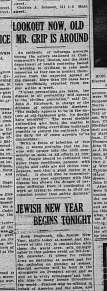
Old Mr. Grip was already here.
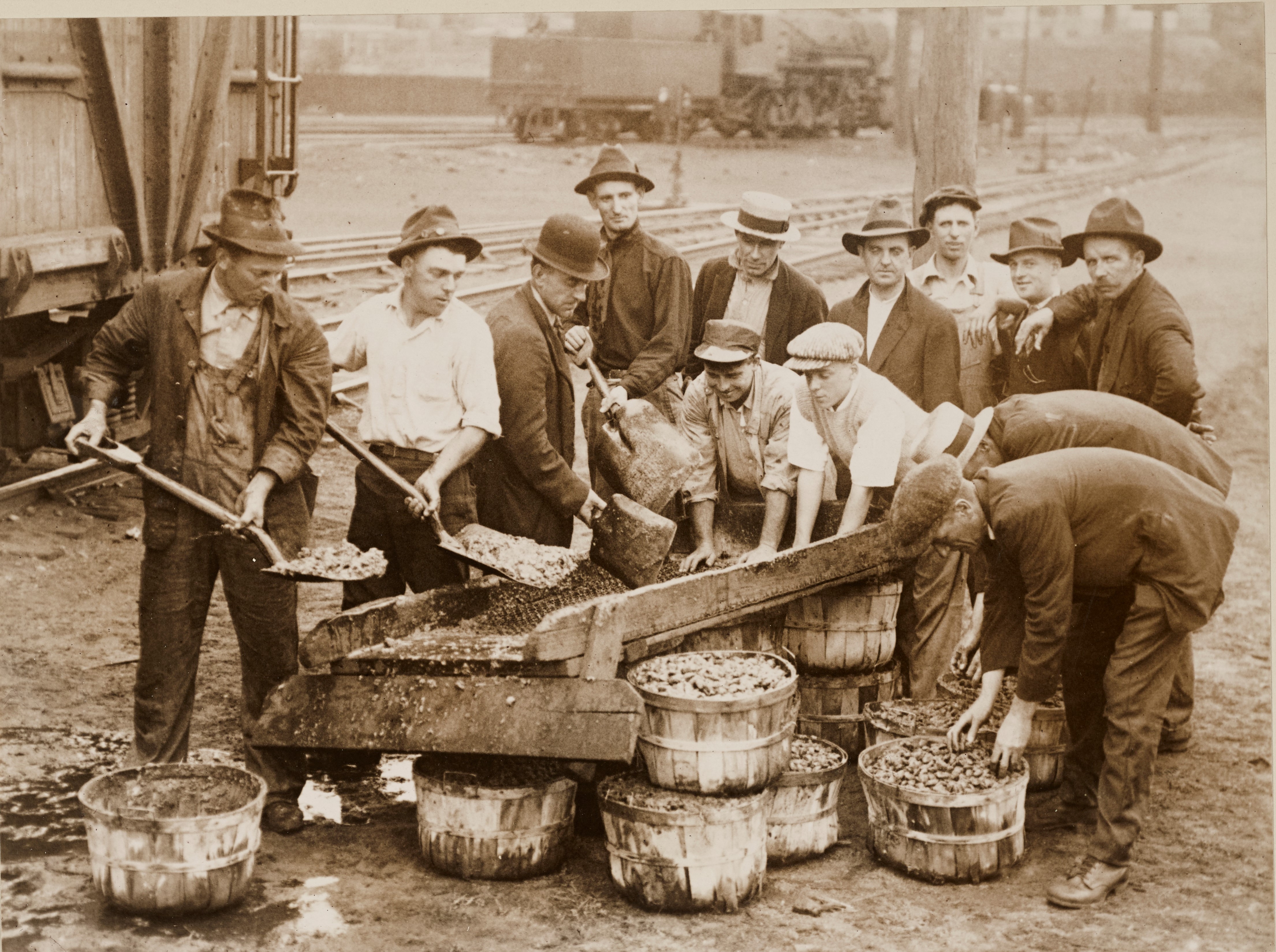

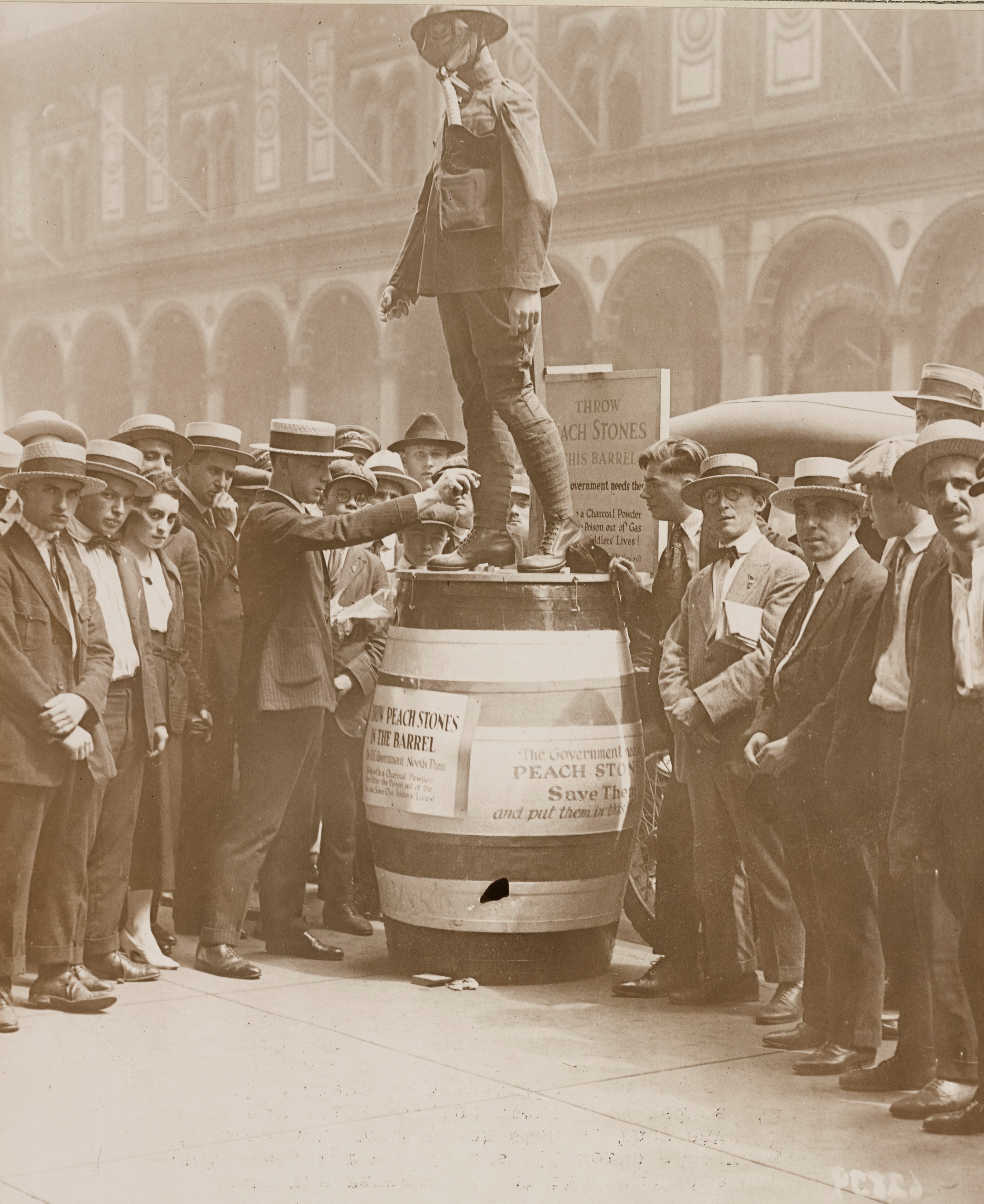
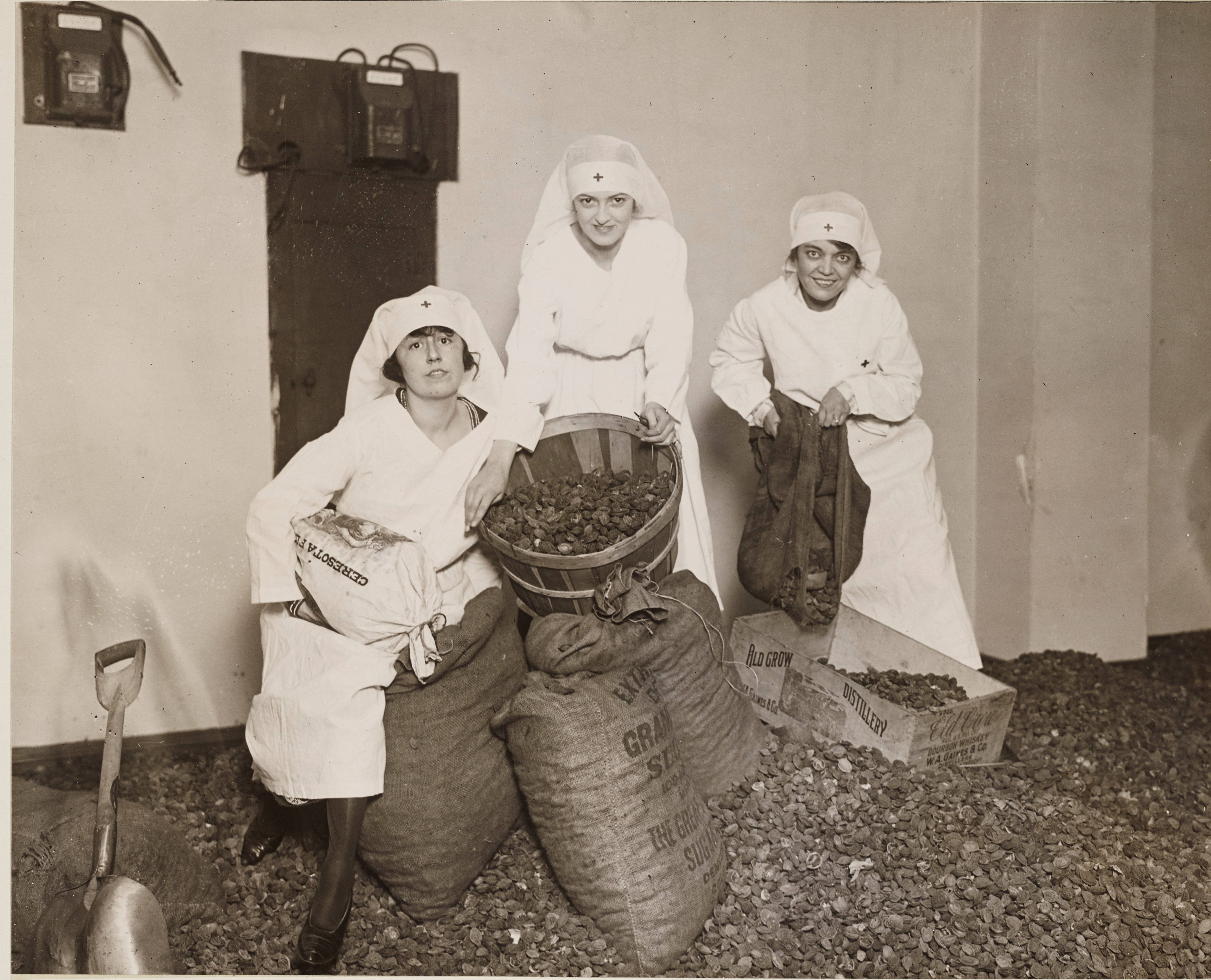


Catherine: great blogs on Cape Ann and the 1918 pandemic. Can I talk with you about fair use of them for a book club. please contact me: jday@jcu.edu
LikeLiked by 1 person
Thanks so much! Look forward to speaking with you 🙂
LikeLike